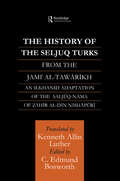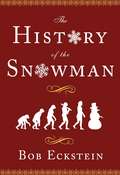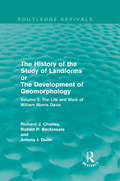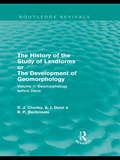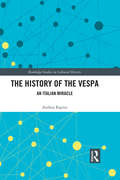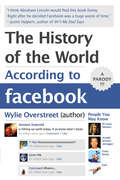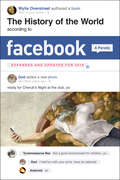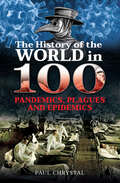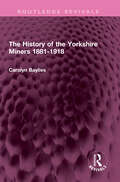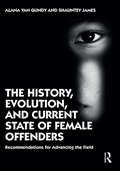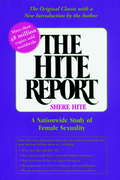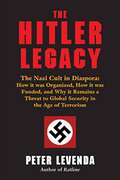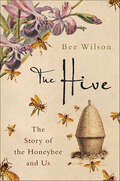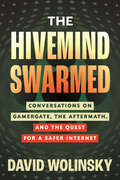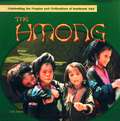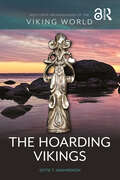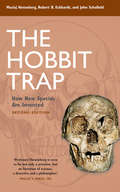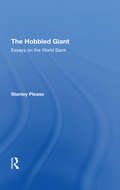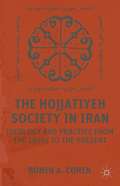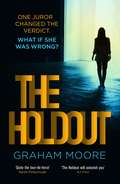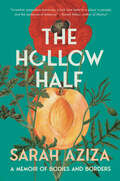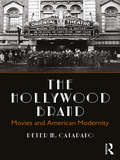- Table View
- List View
The History of the Seljuq Turks: The Saljuq-nama of Zahir al-Din Nishpuri
by Edmund BosworthNishapuri flourished in the 12th century and wrote a succinct history in Persian of the Saljuq Turks, a tribal group from Central Asia who in the 11th century established a vast empire, enduring for some century and a half and bringing about lasting changes to the ethnic composition and the patterns of land utilisation in the northern tier of the M
The History of the Snowman
by Bob EcksteinWho made the first snowman? Who first came up with the idea of placing snowballs on top of each other, and who decided they would use a carrot for a nose? Most puzzling of all: How can this mystery ever be solved, with all the evidence long since melted? The snowman appears everywhere on practically everything -- from knickknacks to greeting cards to seasonal sweaters we plan to return. Whenever we see big snowballs our first impulse is to deck them out with a top hat. Humorist and writer Bob Eckstein has long been fascinated by this ubiquitous symbol of wintertime fun -- and finally, for the first time, one of the world's most popular icons gets his due. A thoroughly entertaining exploration, The History of the Snowman travels back in time to shed light on the snowman's enigmatic past -- from the present day, in which the snowman reigns as the King of Kitsch, to the Dark Ages, with the creation of the very first snowman. Eckstein's curiosity began playfully enough, but soon snowballed into a (mostly) earnest quest of chasing Frosty around the world, into museums and libraries, and seeking out the advice of leading historians and scholars. The result is a riveting history that reaches back through centuries and across cultures -- sweeping from fifteenth-century Italian snowballs to eighteenth-century Russian ice sculptures to the regrettable "white-trash years" (1975-2000). The snowman is not just part of our childhood memories, but is an integral part of our world culture, appearing -- much like a frozen Forrest Gump -- alongside dignitaries and celebrities during momentous events. Again and again, the snowman pops up in rare prints, paintings, early movies, advertising and, over the past century, in every art form imaginable. And the jolly snowman -- ostensibly as pure as the driven snow -- also harbors a dark past full of political intrigue, sex, and violence. With more than two hundred illustrations and a special section of the best snowman cartoons, The History of the Snowman is a truly original winter classic -- smart, surprisingly enlightening, and quite simply the coolest book ever.
The History of the Social Sciences since 1945
by Roger E. Backhouse Philippe FontaineThis compact volume covers the main developments in the social sciences since the Second World War. Chapters on economics, human geography, political science, psychology, social anthropology, and sociology will interest anyone wanting short, accessible histories of those disciplines, all written by experts in the relevant field; they will also make it easy for readers to make comparisons between disciplines. A final chapter proposes a blueprint for a history of the social sciences as a whole. Whereas most of the existing literature considers the social sciences in isolation from one other, this volume shows that they have much in common; for example, they have responded to common problems using overlapping methods, and cross-disciplinary activities have been widespread.
The History of the Study of Landforms - Volume 3: Historical and Regional Geomorphology, 1890-1950 (Routledge Revivals: The History of the Study of Landforms)
by Richard J. Chorley Robert P. BeckinsaleThis volume provides a global treatment of historical and regional geomorphic work as it developed from the end of the nineteenth century to the hiatus of the Second World War. The book deals with the burgeoning of the eustatic theory, the concepts of isostasy and epeirogeny, and the first complete statements of the cycle of erosion and of polycyclic denudation chronology.
The History of the Study of Landforms Volume 2: The Life and Work of William Morris Davis (Routledge Revivals: The History of the Study of Landforms)
by R. P. Beckinsale Mrs R Chorley R. J. Chorley A J Dunn A. J. DunnThis volume is entirely devoted to the life and work of the world's most famous geomorphologist, William Morris Davis (1850-1934). It contains a treatment in depth of Davis' many contributions to the study of landforms including: the cycle of erosion denudation chronology arid and karst geomorphology the coral reef problem.
The History of the Study of Landforms: or the Development of Geomorphology (Routledge Revivals: The History of the Study of Landforms)
by Richard J. Chorley Robert P. Beckinsale Antony J. DunnThis re-issue, first published in 1964, is the first of a seminal series analysing the development of the study of landforms, from both the geographical and geological point of view, with especial emphasis upon fluvial geomorphology. Volume 1 treats the subject up to the first important statement of the cycle of erosion by W. M. Davis in 1889, and attempts to identify the most significant currents of geomorphic thought, integrating them into the broader contemporary intellectual frameworks with which they were associated. As well as dealing with such key figures as Werner, De Saussure, Hutton, Playfair, Buckland, lyell, Agassiz, Ramsay, Dana, Peschel, Powell, Gilbert and Davis, attention is also given to many less important contributions by American, British and continental workers. A spirited biographical treatment, attractively set off by contemporary portraits, diagrams and sketches, will make this book of great interest to the historian of science, and indeed to the general reader, as well as to the student and scholar in geomorphology, hydrology and any other earth science.
The History of the Vespa: An Italian Miracle (Routledge Studies in Cultural History #68)
by Andrea RapiniDespite the symbolic capital and the global commercial success of the Vespa scooter, there is no academic book dealing with its history, only literature produced by the company itself or by scooter enthusiasts. The origins of the Vespa are shrouded in mist, entrusted more to myth than to historical truth. Based on lengthy research carried out in Piaggio’s historical archives and on an interdisciplinary approach, this volume aims to fill this gap. It shows how the Vespa took techniques from the most advanced aeronautical industries in the world, adapting and hybridizing them in an original way, and how the company disseminated its models in the transnational social space.
The History of the World According to Facebook
by Wylie OverstreetThe Sun is now friends with Earth and 7 other planetsPluto: Not cool.What if Facebook had emerged with the Big Bang, and every historical event took place online? Imagine how we’d we see history if . . .On April 15, 1865, Abraham Lincoln updated his status: "Taking the missus to the theater"God and Stephen Hawking trolled each other in a comment war over the creation of the universe?Alexander the Great "checked into" all the countries he conqueredDonald Trump and Vladimir Putin "Liked" each other's cryptic statusesIrreverent and clever, The History of the World According to Facebook goes back through time, from the beginning of the world to the present, to cover all the major events and eras of human history, such as the Renaissance, the Industrial Revolution, and the Information Age. Filled with hundreds of actual figures from across the centuries and thousands of invented statuses, comments, and actions lampooning Facebook users’ penchant for oversharing, abbreviation, self-importance, and lazy jargon, The History of the World According to Facebook defies all attempts at taking the multi-billion user social media platform SRSLY. It is the funniest parody of history and the dawn of man since, well, the dawn of man.
The History of the World According to Facebook, Revised Edition
by Wylie OverstreetA revised and expanded edition of the bestselling parody that includes thirty-pages of new text, photos, and contemporary subjects—a clever and fresh historical chronicle.The Sun is now friends with Earth and 7 other planetsPluto: Not cool.What if Facebook had emerged with the Big Bang, and every historical event took place online? Imagine how we’d we see history if . . .On April 15, 1865, Abraham Lincoln updated his status: "Taking the missus to the theater"God and Stephen Hawking trolled each other in a comment war over the creation of the universe?Alexander the Great "checked into" all the countries he conqueredDonald Trump and Vladimir Putin "Liked" each other's cryptic statusesIrreverent and clever, The History of the World According to Facebook goes back through time, from the beginning of the world to the present, to cover all the major events and eras of human history, such as the Renaissance, the Industrial Revolution, and the Information Age. Wylie Overstreet brings the book up to date with three-dozen pages of additional material on contemporary figures and topics, from Caitlin Jenner to Deflategate to MAGA and Trump.Filled with hundreds of actual figures from across the centuries and thousands of invented statuses, comments, and actions lampooning Facebook users’ penchant for oversharing, abbreviation, self-importance, and lazy jargon, The History of the World According to Facebook defies all attempts at taking the multi-billion user social media platform SRSLY. It is the funniest parody of history and the dawn of man since, well, the dawn of man.
The History of the World in 100 Pandemics, Plagues and Epidemics
by Paul ChrystalThis &“timely, topical, informative [and] exceptionally well written&” history explores the impact of disease from prehistoric plagues to Covid-19 (Midwest Book Review). Historian Paul Chrystal charts how human civilization has grappled with successive pandemics, plagues, and epidemics across millennia. Ranging from prehistory to the present day, this volume begins by defining what constitutes a pandemic or epidemic, taking a close look at 20 historic examples: including cholera, influenza, bubonic plague, leprosy, measles, smallpox, malaria, AIDS, MERS, SARS, Zika, Ebola and, of course, Covid-19. Some less well-known, but equally significant and deadly contagions such as Legionnaires&’ Disease, psittacosis, polio, the Sweat, and dancing plague, are also covered. Chrystal provides comprehensive information on each disease, including epidemiology, sources and vectors, morbidity, and mortality, as well as governmental and societal responses, and their political, legal, and scientific consequences. He sheds light on how public health crises have shaped history—particularly in the realms of medical and scientific research and vaccine development. Chrystal also examines myths about infectious diseases, and the role of the media, including social media.
The History of the Yorkshire Miners 1881-1918 (Routledge Revivals)
by Carolyn BayliesFirst published in 1993, The History of the Yorkshire Miners 1881-1918 is concerned with the workers in the Yorkshire coal industry, their union, and the broader mining communities in which they lived from the formation of the Yorkshire Miners’ Association in 1881 through to the end of the First World War. The period covered is of considerable importance for the consolidation of the Yorkshire Miners Union, and indeed for the building of a national miners’ federation and an international miners’ organisation, in both of which the role of Yorkshire’s leadership was central. The decades straddling the turn of the century were characterised by volatility in the mining industry, which was reflected in a number of strikes. Carolyn Baylies traces these general processes and focuses, in detail, upon a number of episodes during which union struggles and community involvement coalesced. She explores the dynamic between district and local levels of the union, and the tensions that accompanied a progressive rationalization of bargaining machinery. This book will be of interest to students of history and sociology.
The History, Evolution, and Current State of Female Offenders: Recommendations for Advancing the Field
by Alana Van Gundy Shauntey JamesThe History, Evolution, and Current State of Female Offenders: Recommendations for Advancing the Field summarizes what the field has learned about females and crime; details the status of legislation and criminological research focused on female criminality; and provides recommendations for advancing the field. Van Gundy and James present the material from a gendered approach with the goal of analyzing the current understanding of the relationship between gender and crime. Tracing the intellectual history of feminist criminology from its foundations to the present time, the authors follow four primary themes: What do we know about the relationship between gender and crime? What special needs do female offenders have? What works and doesn’t work for female offenders? What can or should we do from here? Reaching back to Carol Smart’s seminal 1976 book, Women, Crime and Criminology: A Feminist Critique (available through Routledge Revivals), the authors note that in some ways, modest progress has been made, but large gaps in research and policy still exist. This much-needed book provides an overarching view of the history and evolution of the understanding of the relationship between gender and crime, detailed analysis of seminal work and criminological studies, an exploration of incarceration, reentry and programing, and concrete recommendations for future research. These recommendations focus on the importance of creating and utilizing theoretical models that measure the role of gender and identity, inclusion of female-specific variables when examining and responding to criminality, and the necessity of policymakers and legislators to address female criminality from a gendered lens. The book will appeal to those who are interested in females and criminality, race and ethnicity, policy and evaluation, criminal behavior, criminology, and students in courses in sociology, psychology, women and gender studies, social justice, black world studies, gerontology, and criminology/criminal justice, as well as policymakers and practitioners in the field. It will inspire researchers to ask the kinds of questions that will advance the field of feminist criminology in the future.
The Hite Report: A Nationwide Study of Female Sexuality
by Shere HiteA reproduction of the classic text, unavailable now for more than a decade, with a new introduction by the author. The Hite Report, first published in 1976, was a sexual revolution in six hundred pages. To answer sensitive questions dealing with the most intimate details of women's sexuality, Hite's innovation was simple: she asked women, a lot of them, everything--and published the results.One hundred thousand women, ages fourteen to seventy-eight, were asked what they do and don't like about sex; how orgasm really feels, with and without intercourse; how it feels not to have an orgasm during sex; the importance of clitoral stimulation and masturbation; and to name the greatest pleasures and frustrations of their sexual lives, among many other questions.The Hite Report declares that orgasm is easy and strong for women, given the right stimulation; that most women have orgasm most easily during masturbation or clitoral stimulation by hand; that sex as we define it is a cultural institution, not a biological one; and that attitudes must change to include the stimulation women desire.
The Hitler Legacy: The Nazi Cult In Diaspora: How It Was Organized, How It Was Funded, And Why It Remains A Threat To Global Security In The Age Of Terrorism
by Peter LevendaMore than thirty years after his first investigation of the Nazi underground Peter Levenda has returned again and again to his quest for the truth about the true character of the Nazi cult and the people and political movements it has influenced in the decades since the end of World War II. The wide sweep of this investigation moves from a Ku Klux Klan headquarters in Reading, Pennsylvania to the New York City office of the Palestine Liberation Organization; from the apartment of a notorious neo-Nazi leader to an Islamic boarding school—headquarters of the man who ordered the Bali Bombings. When Levenda uncovered the existence of a Nazi underworld in Asia, the nexus of religion, politics, terrorism and occult beliefs was revealed to be the real domain of the threat to global security. Meticulously researched—from both archival material and declassified intelligence agency files, to personal interviews and investigations undertaken in Asia, Europe and Latin America—The Hitler Legacy is the story of how the mistakes of the 20th century have come home to roost in the 21st. This book will challenge the conventional thinking about such subjects as the Muslim Brotherhood and Islamist terrorism and even about the alleged death of one of history's most infamous killers—Adolf Hitler.
The Hive: The Story of the Honeybee and Us
by Bee WilsonEver since men first hunted for honeycomb in rocks and daubed pictures of it on cave walls, the honeybee has been seen as one of the wonders of nature: social, industrious, beautiful, terrifying. No other creature has inspired in humans an identification so passionate, persistent, or fantastical.The Hive recounts the astonishing tale of all the weird and wonderful things that humans believed about bees and their "society" over the ages. It ranges from the honey delta of ancient Egypt to the Tupelo forests of modern Florida, taking in a cast of characters including Alexander the Great and Napoleon, Sherlock Holmes and Muhammed Ali.The history of humans and honeybees is also a history of ideas, taking us through the evolution of science, religion, and politics, and a social history that explores the bee's impact on food and human ritual. In this beautifully illustrated book, Bee Wilson shows how humans will always view the hive as a miniature universe with order and purpose, and look to it to make sense of their own.
The Hivemind Swarmed: Conversations on Gamergate, the Aftermath, and the Quest for a Safer Internet
by David WolinskyAn incisive oral history that brings together the voices of major figures in gaming, tech, media, and politics to reflect on the long shadow of GamergateWith The Hivemind Swarmed, oral historian and documentary researcher David Wolinsky invites readers to sit in on a series of urgent, intimate conversations between some of the most distinguished voices across entertainment and media as they reflect on the longstanding impact of Gamergate. What went wrong, and what can we learn from Gamergate to help us build a more equitable online world?The backstory: 10 years ago, a disgruntled software developer named Eron Gjoni posted online to accuse his ex-girlfriend, game developer Zoë Quinn, of sleeping with game critics in exchange for positive reviews. He offered no evidence to back up his claims. However, his posts were picked up by extremists in the gaming community who built a vicious online movement targeting women, minorities, and progressive voices. Rallying under the hashtag #gamergate, they sent their victims round-the-clock death and rape threats. Game companies, for the most part, declined to take action as their female employees were harassed out of their jobs. The FBI launched an investigation but found "no true threat."Gamergate holds the grim distinction of being the first modern online harassment campaign. It arguably served as a model for the alt-right movement that would help propel Donald Trump to the White House. And it highlighted a toxic media culture—not just in gaming, but in film, TV, journalism, and more—in which leaders, through their passivity, took the side of the oppressor. Now, ten years later—in the wake of #MeToo, Charlottesville, the Trump years, and the January 6 insurrection—the questions discussed here are more important than ever.
The Hmong
by Dolly BrittanA short, factual tour of what it means to be Hmong and Hmong culture of today and yesteryear.
The Hoarding Vikings (ISSN)
by Gitte T. IngvardsonThis book investigates whether Viking hoards leave behind traces of the people who deposited them and the reasons for doing so. The focus is on the Viking-Age hoards of the Danish island of Bornholm in the Baltic Sea, a unique find group in both quantity and quality.The large number of excavated Bornholm hoards enable the inclusion of the archaeological context on an unpreceded scale. This book explores how hoards fulfilled many different purposes and Bourdieu’s theory on capital and field forms the theoretical frame for a multi-contextual analysis of the hoards’ relation to the economic, social, cultural, and ritual fields. A fundamental principle of the methodical approach is that all parts of the hoards are equally important for interpretation. It is in the interaction between archaeological and numismatic data, between the objects’ production and circulation data, and between the accumulation and deposition data, that the functions of the hoards appear. This holistic analytic model illuminates how and by whom the hoards were accumulated and deposited, theorising that the motivations for purpose of depositing different hoard types vary and that these motivations are reflected in the deposition contexts. Besides describing the acts and actors that influenced the accumulation and deposition of silver, the book also examines how hoards influenced Viking-Age people and society.Demonstrating that the motivation behind the accumulation and deposition of hoards was multifaceted, The Hoarding Vikings is for researchers and students of Viking archaeology.
The Hobbit Trap: How New Species Are Invented
by John Schofield Robert B Eckhardt Maciej HennebergWhen scientists found the remains of a tiny hominid on an Indonesian in 2004, they claimed they found a totally new species of human ancestor (homo floresiensis), and called it a Hobbit. Film crews rolled in and the little creature took the world by storm, but a group of prominent scientists, including Maciej Henneberg and Robert Eckhardt, smelled a rat. They refuted the data—the size and shape of bones, the inferences about height—and they raised fundamental questions about scientific method, revealing cultural and political pressures that lead to the wide acceptance of unsupported theories. The Hobbit Trap describes how the case against the “new species” theory developed and offers an important critique of the species concept in evolution. In this thoroughly updated second edition, the authors include new data and analysis of the Flores fossils, and expand their important analysis of scientific practice, calling for a new movement to reverse the decline in scientific standards and the rise in scientific politics. This lively and important challenge to conventional wisdom is accessible to the general reader and makes a stimulating addition to courses on the history and philosophy of science, evolution and physical anthropology.
The Hobbled Giant: Essays On The World Bank
by Stanley PleaseFirst published in 1984. In these essays, Stanley Please contends that the World Bank is constrained in its ability to use its position and .power in the interests of more rapid development of the poorer countries of the world. These constraints derive in large part from the legal restriction on the Bank to engage primarily in project lending and from the division of responsibility between the ·Bank and its sister institution, the International Monetary Fund (IMF). Although the Bank's financing of projects and investment programs has made a significant contribution, Mr. Please argues that greater Bank involvement in national policy formation can greatly benefit economic development. He looks at ways to increase cooperation between the Bank and the IMF, examines the policy work the Bank has done in the past and assesses the capacity of the Bank for policy formation, evaluates the need for it to do more such work, and discusses the likely responses of developing and developed countries to these changes
The Hojjatiyeh Society in Iran
by Ronen A. CohenThis book analyzes the evolution of the Hojjatiyeh movement in Iran, a semi-clandestine movement which emerged in the 1950s as an anti-Baha'i movement, went underground in the 1960s, and re-emerged openly after Iran's 1979 revolution with its members coming to occupy some of the highest echelon posts in Iranian politics
The Hold Life Has: Coca and Cultural Identity in an Andean Community (Series In Ethnographic Inquiry)
by Catherine J. AllenThis second edition of Catherine J. Allen's distinctive ethnography of the Quechua-speaking people of the Andes brings their story into the present. She has added an extensive afterword based on her visits to Sonqo in 1995 and 2000 and has updated and revised parts of the original text. The book focuses on the very real problem of cultural continuity in a changing world, and Allen finds that the hold life has in 2002 is not the same as it was in 1985.From the Trade Paperback edition.
The Holdout: The tense, gripping Richard and Judy Book Club pick for 2021
by Graham Moore'The most gripping and satisfying thriller I've read in more than a decade' Sophie Hannah'One of the best legal thrillers ... as elegant and gripping as Scott Turow's Presumed Innocent' Daily Mail'Quite the tour de force! Twelve Angry Men meets Chinatown and creates something of its own' Sarah Pinborough'This is a tense, emotionally charged, scary-good, stand-out read' Caroline Kepnes**********MAJOR TV SERIES COMING SOON - FROM THE PEOPLE WHO BROUGHT YOU NETFLIX'S UNBELIEVABLE... One juror changed the verdict. What if she was wrong?'Ten years ago we made a decision together...'Fifteen-year-old Jessica Silver, heiress to a billion-dollar fortune, vanishes on her way home from school. Her teacher, Bobby Nock, is the prime suspect. It's an open and shut case for the prosecution, and a quick conviction seems all but guaranteed. Until Maya Seale, a young woman on the jury, persuades the rest of the jurors to vote not guilty: a controversial decision that will change all of their lives forever.Ten years later, one of the jurors is found dead, and Maya is the prime suspect.The real killer could be any of the other ten jurors. Is Maya being forced to pay the price for her decision all those years ago?**********'Plunge a syringe filled with adrenaline into the heart of Twelve Angry Men and you've got The Holdout: the first legal thriller in thirty years - ever since Presumed Innocent and A Time to Kill electrified readers the world over - to rank alongside those two modern classics.' AJ Finn'A page-turning legal thriller with a twisty and absolutely riveting plot ... plus a strong and compelling female heroine. You won't be able to put this one down!' Lisa Scottoline'Clever, well-written and twistier than a can of silly-string. You absolutely need to read The Holdout!' Emma Kavanagh'Amazing thriller, deserves to be one of the biggest books of 2020' Michelle Davies'Terrific, twisty and well-structured thriller' Adele Geras
The Hollow Half: A Memoir of Bodies and Borders
by Sarah AzizaA brush with death. An ancestral haunting. A century of family secrets. Sarah Aziza&’s searing, genre-bending memoir traces three generations of diasporic Palestinians from Gaza to the Midwest to New York City—and back&“You were dead, Sarah, you were dead.&” In October 2019, Sarah Aziza, daughter and granddaughter of Gazan refugees, is narrowly saved after being hospitalized for an eating disorder. The doctors revive her body, but it is no simple thing to return to the land of the living. Aziza&’s crisis is a rupture that brings both her ancestral and personal past into vivid presence. The hauntings begin in the hospital cafeteria, when a mysterious incident summons the familiar voice of her deceased Palestinian grandmother.In the months following, as she responds to a series of ghostly dreams, Aziza unearths family secrets that reveal the ways her own trauma and anorexia echo generations of violent Palestinian displacement and erasure—and how her fight to recover builds on a century of defiant survival and love. As she moves towards this legacy, Aziza learns to resist the forces of colonization, denial, and patriarchy both within and outside her.Weaving timelines, languages, geographies, and genres, The Hollow Half probes the contradictions and contingencies that create &“nation&” and &“history.&” Blazing with honesty, urgency, and poetry, this stunning debut memoir is a fearless call to imagine both the self and the world anew.
The Hollywood Brand: Movies and American Modernity
by Peter M. CatapanoThe Hollywood Brand traces the development of the moving picture from its humble roots as an object of mass amusement to its transformation into an art form worthy of exhibition in museums and academic study in leading universities. This book provides historical context to the ideas that coalesce to create the iconic Hollywood brand that comes to define American identity.
